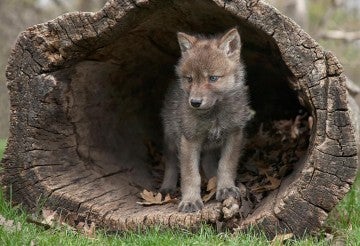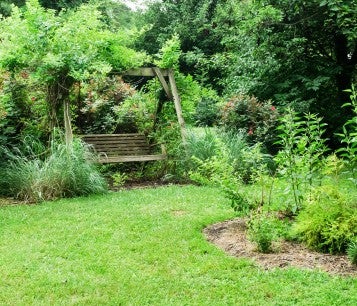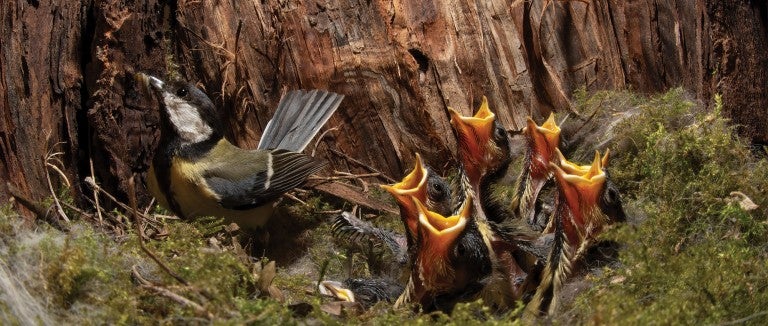It’s not easy to accept that all things must eventually come to an end. We often go into denial in the face of the inevitable and airbrush away the aftermath when it does occur.
So it probably shouldn’t have surprised me to read about a gardener who glossed over the demise of an entire tree with spray-paint, covering every crevice as if it were a rusty old chair. Just days before a public tour, he explained in a magazine article, the tree had lost its leaves, and in his panicked state he coated it in cobalt blue.
In the 15 years since I first saw the photo spread showcasing this spectacle, not much has changed in our approach toward death in the garden. Even the imagery of everyday language reinforces a lack of respect for plants past their prime: No one wants to become “dead wood” in his career or run into a “snag” in his plans. Nor is it desirable to have “debris” or “litter” lying around our homes.
But the elements we all too often chop down, rake away, chase with leaf blowers, bag up to be hauled off like trash—and, inexplicably, spray-paint—are homes for other species, not to mention restaurants, kitchens and nurseries. For so many animals, life begins in the decay. Some are nature’s homebuilders: Where beetles have tunneled into dead trees, wood-nesting native bees raise their young; where woodpeckers carve out holes for nests, bluebirds, squirrels and owls move in after the original family moves on. A diverse array of other animals—fly larvae, moles and prairie dogs, to name a few—recycle and till the soil, enriching it as they eat near the surface or build chambers underground.

In death, plants and animals return more to the earth than they ever take, writes University of Illinois research scientist James Nardi in his book Life in the Soil: A Guide for Naturalists and Gardeners. Recently I asked him, somewhat rhetorically, if it’s safe to say that statement no longer applies to our own species, which sends millions of tons of organic material to landfills each year. “Yes, we’ve really broken the cycle,” he said, adding that there’s no need to fertilize soils artificially. “It’s a natural process, but we humans have interrupted it by removing leaves from our yards and planting lawns.”
Here’s how—and why—we should welcome nature back into our gardens.
LET FALLEN LEAVES LIE
As we sit by the fire in the colder parts of the continent, queen bumblebees and gray tree frogs are spending winter under blankets of leaves and loose soil. Pupae of hummingbird clearwing moths are cocooned beneath coral honeysuckle vines and other host plants, and red-banded hairstreak butterfly babies await spring in fallen sumac leaves.
Leaves also provide structure to the soil and food for countless creatures. A square meter of soil can contain more than a trillion microbes working hard to decompose organic remains and make essential nutrients available to plant roots. Alongside them is a diverse community of larger predators and recyclers—including springtails, millipedes, snails, earwigs, crickets and worms—who together make a rich banquet for toads, birds and other foragers.
Recognizing their essential role, Nardi rescues leaves from neighbors before they’re sent to the landfill. He also avoids tilling and chemicals to protect his microscropic helpers. “The birds and the mammals—they’re dependent on these creatures,” he says. “I have a lot of shrews in my backyard. They’re wonderful little guys, and they feed on these insects in the soil, and if the soil’s poisoned, there’s nothing for them to feed upon.”
Without the humid leaf layer, we wouldn’t have fireflies to light up our nights; their larvae feed on earthworms and other invertebrates within. “They’re never going to live in an area that gets sunbaked and completely dried out,” says University of Delaware entomology professor Doug Tallamy, author of Bringing Nature Home. “It’s our propensity to clean up and make sure there’s nothing on the ground, but bare soil is instant death to these guys.”
Leaving the leaves where they fall or piling them under shrubs may also invite ovenbirds, one of 54 bird species that breed in Tallamy’s Pennsylvania yard, once a barren hayfield he’s let bud into a forest. They make their oven-shaped nests on the ground out of leaves, says Tallamy, so “they will only nest where you’ve got good leaf litter.”
Give Trees an Afterlife
Tallamy’s 10-acre property attracts rare salamanders, but you don’t need that much space to entice these unique visitors. Paula Goldberg assumed the salamanders she’d seen at her urban Maryland home 30 years ago had long since vanished in the face of increasing development. To her delight, she found a red-backed salamander and a dusky salamander under some logs last spring. Left there temporarily “because I was too lazy to haul them out,” the logs will now be permanent fixtures of the garden, says Goldberg, the executive director of City Wildlife in Washington, D.C.
Dead wood can become a “free sculptural asset” for homeowners, says landscape designer Mary Sper of Natural Resources Design in Washington, D.C. Fascinated by tree snags, Sper sees fantastical shapes in their branching, finding representations of antelopes and other creatures the way some might imagine them in clouds. She’s also observed an abundance of real creatures finding snacks within, including one woodpecker recently chiseling away at an oak snag after systematically casing every cavity of a sycamore by a stream near her home. “That bird would not let that tree go until he checked every hole in it,” she says.
The experience illustrated the tremendous value of snags. “They’re supporting as much wildlife if not more than they did when they were alive,” says Sper. When woodpeckers abandon their nests to make new ones each year, they create a condo for other cavity nesters. Raccoons, martens, porcupines, foxes, bobcats and even bears use snags and hollowed-out logs. Owls and hawks perch atop dead trees to survey their domain. Brown creepers nest inside strips of loose bark pulling away from the tree.
A humane backyard is a natural habitat offering wildlife plenty of food, water and cover, plus a safe place to live free from pesticides, chemicals, free-roaming pets, inhumane practices and other threats. And it's so easy to build!

Home gardeners can attract some of these animals by training a vine such as Virginia creeper up a snag and planting serviceberries, redbuds, fruiting shrubs or other understory species native to their regions, says Sper. Mimicking nature gives the feeling of shelter and safety to cautious songbirds needing quick cover from predators. As a purposeful part of the habitat garden, this technique also may satisfy skeptical human neighbors.
Perennials and deciduous shrubs may look dead to us as well at this time of year, but seed heads feed birds and pithy stems shelter larvae of cavity-nesting bees. Wait until late spring to cut them back, and scatter the stalks under shrubs or around the garden. To provide shelter for turtles and insect meals for birds, create handmade brush piles from branches and twigs, says HSUS senior scientist John Hadidian. The piles can be neatly arranged and managed or left to develop more naturally, depending on your neighborhood and your tastes. “Let your imagination work,” Hadidian says. “There’s no limit to what you can do.”
In the meantime, enjoy watching goldfinch acrobatics and hearing brown seed heads rustle in the winter winds, advises Sper. It’s what nature intended. “No one cleared the forest before we did to move dead wood out,” she says. “Dead wood is not dead; it really has a second life.”

Life from death
Look closely and you’ll find that a seemingly dead and barren landscape provides plenty of necessities to the creatures who live there.
- Living soil. Diverse communities of creatures—from bacteria and fungi to springtails and snails—serve as predators and recyclers in the soil.
- Log houses. Salamanders, frogs and turtles seek refuge in the damp decay.
- Watchtowers. Owls and hawks perch atop tree snags to survey their domain.
- Nests and rest spots. Raccoons, martens, porcupines, foxes, bobcats and even bears rest or nest in snags and hollowed-out logs.
- Winter blankets. Red-banded hairstreak butterflies lay their eggs on fallen sumac leaves, while hummingbird moths overwinter as pupae in leaves under their host plants.
- Leafy feasts. Ground-foraging birds such as juncos, robins, thrushes and sparrows snack on seeds, berries, spiders, flies and other arthropods. As larvae, fireflies feed on prey such as earthworms.
Want more content like this?
This was written and produced by the team behind All Animals, our award-winning magazine. Each issue is packed with inspiring stories about how we are changing the world for animals together.
Learn MoreSubscribe
